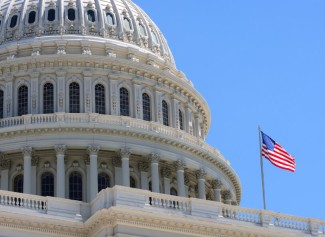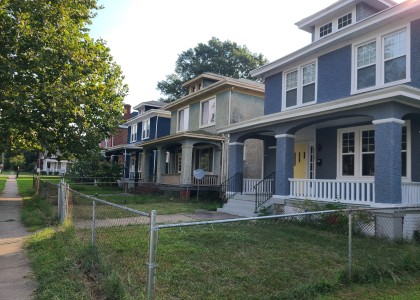The infrastructure bill recently passed by the U.S. Senate includes billions of dollars in energy efficiency funding and should lay the groundwork for transformative investments needed ahead.
Thanks to key support from Senators Shaheen (D-NH), Portman (R-OH), and Manchin (D-WV), the bill includes major new funding for a series of efficiency investments. It also includes provisions, particularly in transportation, that are disappointing. The U.S. House, meanwhile, is considering a resolution this week that would advance both the infrastructure bill and the budget, which sets the template for a future “reconciliation” bill that can pass the Senate with only 51 votes.
As temperatures rise and wildfires spread, we need dramatic action to cut our greenhouse gas emissions. We estimate larger efficiency investments across buildings, industry, and transportation—if incorporated in an upcoming reconciliation bill—could add more than four million jobs, save almost $500 billion, and slash greenhouse emissions by more than 6 billion tons (see these analyses). That’s more than the total net U.S. greenhouse gas emissions for a year.
Here is a brief recap of several of the wins for energy efficiency in the Senate’s infrastructure bill and areas where we need to see far more—in other words, our priorities for the reconciliation bill ahead.
Efficiency programs and a clean electricity standard
The infrastructure bill includes $500 million for state energy offices and $550 million for local energy efficiency and conservation block grants to assist a broad range of state and local initiatives and financing, as well as several specific programs that state and local governments would run (some mentioned below).
The budget anticipates a “Clean Electricity Payment Program” to push utilities to clean generation through payments and fees. But as our recent issue brief and fact sheet discuss, we also need far more investment in efficiency and demand management to enable a cost-effective, equitable, and reliable clean grid and electrification.
Industrial decarbonization
The infrastructure bill includes $150 million to boost Industrial Assessment Centers (IACs), which help small manufacturing plants identify possible efficiency improvements, and a new $400 million grant program we proposed to help the plants implement them. It also includes $500 million for demonstration projects under last year’s Clean Industrial Technology Act and $50 million we sought for smart manufacturing, as well as billions of dollars for carbon capture and hydrogen technologies broadly, though with limited focus on industrial applications.
That’s a start. But other than Buy Clean proposals for procurement of products that are less carbon-intensive, industrial decarbonization has mostly been missing from the debate over the reconciliation bill. To decarbonize industry by 2050, we need to get moving now. We are working with members of Congress on proposals to enable commercial-scale applications of transformative technologies (First 3), transformation of industrial clusters, and effective energy management.
Home and building retrofits and electrification
The infrastructure bill includes $3.5 billion for low-income home weatherization, a new revolving loan fund supporting commercial building and home upgrades, funds for public school and federal building upgrades, and worker training (including a program we proposed for commercial buildings similar to IACs).
Much more help is needed to upgrade homes and commercial buildings, and we are engaged in ongoing discussions on the HOPE for HOMES training and retrofit proposal, the GREAHT proposal for multifamily retrofits and electrification, and numerous proposals for rebates or tax credits for heat pumps and heat pump water heaters, including the Zero-Emission Homes Act.
Zero energy homes and buildings
The infrastructure bill includes $225 million for grants to states and others for implementation of building energy codes.
New homes and commercial buildings need to move rapidly beyond current codes to slash energy use on the way to zero-net energy. The Clean Energy for America Act, a collection of tax changes introduced in the Senate and intended for the reconciliation bill, would revamp current incentives to encourage zero-energy-ready homes and commercial buildings (as well as improved incentives for home and building upgrades). In addition, support for building and rehabilitating affordable housing should ensure residential buildings are built right so they don’t waste energy.
Electric vehicles and efficient transportation
The infrastructure bill encompasses the regular 5-year transportation bill (based on last year’s Senate proposal), which takes some comparatively small steps to address greenhouse gases from transportation, now the largest-emitting sector. It includes $7.5 billion aimed mostly to install more electric vehicle chargers and $2.5 billion for zero-emission school buses. While the bill allocates $39 billion more to public transportation and includes a new $6.4 billion loosely defined carbon-reduction program, it largely fails to reorient federal transportation funding away from highways toward more-efficient passenger and freight mobility options. Look for a separate blog post soon on the missed opportunity to create sound, climate-focused transportation policy.
For the reconciliation bill, we are especially supportive of incentives for electric trucks, which are behind electric cars in development (these are also in the Senate tax bill), as well as much more funding for universally accessible vehicle charging. We also need serious funding for climate-focused transportation programs with strong greenhouse gas emissions tracking and performance criteria for both passenger and freight transportation.
The biggest challenges are ahead
The hard work of turning the budget blueprint into a reconciliation bill that the Senate can pass with a simple majority will take several weeks or months, with committees due to submit their pieces of the overall legislation by September 15. Lawmakers have the opportunity to make historic efficiency investments across the economy that will reduce emissions, create jobs, and help consumers by reducing energy waste and costs.


